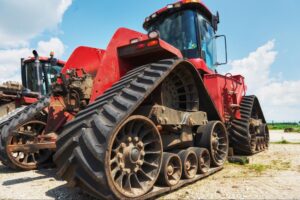U.S.-Canada tariffs are changing rapidly. Contact our team for guidance on ensuring shipment compliance, avoiding penalties, and optimizing your cross-border operations.
The United States represents a significant market for wood and wood products, driven by a robust construction sector and consumer demand for furniture, flooring, and other wood-based items. For international businesses involved in the timber industry, this presents a lucrative opportunity to tap into a thriving market.
However, importing wood products into the USA requires careful navigation of regulatory complexities. Importers must consider various factors, including compliance with the U.S. Forest Service’s Animal and Plant Health Inspection Services (APHIS) regulations and obtaining the necessary Timber and Timber Products Import Permit (PPQ form 585).
Whether you’re importing finished wood products like furniture or raw lumber for construction, understanding the applicable regulations is crucial for a smooth and successful import experience.
Wood Imports in the United States
The U.S. boasts a substantial market for wood and wood products, with demand fueled by various sectors, including construction, furniture manufacturing, and paper production. Projections indicate that this market will reach a value of US$61.5 billion by the end of 2025, exhibiting an annual growth rate of 1.27% (CAGR 2025-2029).
As the largest importer of wood products globally, the United States imported $24.8 billion worth of wood products in 2023. However, recent challenges, such as the 3 billion board feet (BBF) of sawmill closures in 2024, have led the USA to diversify its import sources. While Canada, China, and Brazil remain major suppliers, imports have “branched out” to include countries like Germany, Sweden, and New Zealand, each increasing their wood exports to the U.S. by at least 50%.
Can You Bring Wood Products Into USA?
Several factors influence the specific regulations that apply to your shipment into the USA, including the type of wood product, its intended use, and its origin.
Here are some key factors and their associated requirements:
- CITES Regulation: The Convention on International Trade in Endangered Species of Wild Fauna and Flora (CITES) regulates the trade of endangered wood species. If you’re importing wood products derived from CITES-listed species, you’ll need to obtain the necessary permits and comply with CITES regulations.
- Finished or Unfinished Wood: Finished wood products, such as furniture or flooring, generally have different import requirements than unfinished wood, like lumber or logs. Finished products may be subject to additional labeling and safety regulations.
- Country of Origin: The country where the wood was harvested or the wood product was manufactured influences the applicable regulations and tariffs. Certain countries may have preferential trade agreements or be subject to specific import restrictions.
- Intended Use: The intended use of the wood product also affects import regulations. For example, wood intended for construction may have different requirements than wood used for packaging or decorative purposes.
- Lacey Act: The Lacey Act combats illegal logging and requires importers to declare the species and origin of wood products. This helps ensure that imported wood is sourced legally and sustainably.
Key Requirements for Wood Imports
Several regulatory authorities play a role in overseeing the import of wood and wood products into the USA. Here are some key agencies involved:
- U.S. Department of Agriculture (USDA): The USDA oversees agricultural imports, including wood products. They enforce regulations to protect U.S. forests and agriculture from pests and diseases.
- Animal and Plant Health Inspection Service (APHIS): APHIS, a branch of the USDA, is responsible for safeguarding U.S. plant and animal health. They regulate the import of wood products to prevent the introduction of harmful pests and diseases. This includes requiring permits, inspections, and treatments for certain wood products to mitigate the risk of introducing invasive species or diseases.
- Environmental Protection Agency (EPA): The EPA regulates the import of wood products treated with pesticides or preservatives to ensure they meet environmental standards and don’t pose risks to human health or the environment. Importers must comply with the Toxic Substances Control Act (TSCA) and the Federal Insecticide, Fungicide, and Rodenticide Act (FIFRA) when importing treated wood products.
- Customs and Border Protection (CBP): CBP enforces import regulations, collects duties and tariffs, and inspects shipments to ensure compliance with all applicable laws. This includes verifying proper documentation, labeling, and compliance with other agencies’ regulations, such as those from APHIS and the EPA.
Lacey Act Declaration
The Lacey Act combats illegal logging by requiring importers of wood products to declare the species and origin of the wood. This declaration helps ensure that the imported wood was harvested legally and sustainably, promoting responsible forestry practices.
Importers must submit a Lacey Act declaration with their shipment, providing accurate information about the wood species and its country of origin. Failure to comply with the Lacey Act can result in penalties, including fines and seizure of goods upon arrival in the USA.
Relevant PPQ Forms include:
- PPQ Form 585 (Timber and Timber Products Import Permit): This permit is required for importing many wood products, especially those that may pose a pest or disease risk.
- PPQ Form 586 (Declaration for Importation or Exportation of Plants or Plant Products): This form is used to declare plant-based products, including certain wood products, to APHIS.
- PPQ Form 587 (Application for Import Permit, Phytosanitary Certificate, and/or Inspection): This form is used to apply for permits and inspections for various plant products, including wood.
CITES Permits
The Convention on International Trade in Endangered Species of Wild Fauna and Flora (CITES) regulates the trade of endangered species, including certain wood species. If you’re importing wood products derived from CITES-listed species, you’ll need to obtain CITES permits.
These permits ensure that the trade of these species is sustainable and doesn’t threaten their survival. CITES permits are required for a variety of wood species, including, but are not limited to:
- Bigleaf Mahogany (Swietenia macrophylla)
- Brazilian Rosewood (Dalbergia nigra)
- Honduran Rosewood (Dalbergia stevensonii)
- African Blackwood (Dalbergia melanoxylon)
- Ramin (Gonystylus spp.)
Phytosanitary Certificates & Treatment
Phytosanitary certificates and treatments help prevent the introduction of plant pests and diseases through wood product imports. A phytosanitary certificate issued by the exporting country’s plant protection agency certifies that the wood products have been inspected and are free from harmful pests and diseases.
For instance, according to the USDA, all raw softwood lumber imports should be consigned to a facility with a valid compliance agreement with Plant Protection and Quarantine, and the lumber must be heat treated within 30 days of arrival. Furthermore, restrictions exist on log imports; currently, only Monterey Pine from New Zealand and Chile, and Douglas Fir from Chile are allowed into the USA.
Depending on the type of wood product and its origin, treatments like heat treatment or fumigation may be required to mitigate pest risk. Phytosanitary certificates and treatments are essential for raw wood and wood packaging materials (WPM) to prevent the introduction of pests that could harm U.S. forests and agriculture.
EPA Formaldehyde Emissions Standards
Formaldehyde is a chemical used in some wood products, such as composite wood panels. The Environmental Protection Agency (EPA) sets formaldehyde emission standards for these products to protect human health.
Importers of wood products containing formaldehyde must ensure they meet the EPA’s emission standards when shipping to the USA. This often involves obtaining a TSCA compliance certification, demonstrating that the products comply with the Toxic Substances Control Act (TSCA). These standards primarily affect composite wood products like plywood, particleboard, and medium-density fiberboard (MDF), which are commonly used in furniture and construction.
Customs Clearance, Duties & Tariffs for Wood Imports
Importing wood products into USA involves a customs clearance process to ensure compliance with regulations and determine the applicable duties and tariffs. Importers must classify their wood products correctly under the Harmonized Tariff Schedule (HTS) to determine the appropriate import duties. Common HTS shipping codes for wood and wood products include:
| HTS Code | Description |
| 4401 | Fuel wood, in logs, in billets, in twigs, in faggots or in similar forms; wood in chips or particles; sawdust and wood waste and scrap, whether or not agglomerated in logs, briquettes, pellets, or similar forms. |
| 4403 | Wood in the rough, whether or not stripped of bark or sapwood or roughly squared. |
| 4407 | Wood sawn or chipped lengthwise, sliced or peeled, whether or not planed, sanded, or end-jointed, of a thickness exceeding 6 mm. |
| 4408 | Veneer sheets and sheets for plywood, of wood, sliced or peeled, whether or not planed, sanded, spliced, or end-jointed, of a thickness not exceeding 6 mm. |
| 4409 | Wood (including strips and friezes for parquet flooring, not assembled) continuously shaped (tongued, grooved, rebated, chamfered, V-jointed, beaded, molded, rounded, or the like) along any of its edges, ends, or faces, whether or not planed, sanded, or end-jointed. |
| 4410 | Particle board, oriented strand board (OSB), and similar board, of wood or other ligneous materials, whether or not agglomerated with resins or other organic binding substances. |
| 4411 | Fiberboard of wood or other ligneous materials, whether or not bonded with resins or other organic substances. |
| 4412 | Plywood, veneered panels, and similar laminated wood. |
| 4418 | Builders’ joinery and carpentry of wood, including cellular wood panels, assembled flooring panels, shingles, and shakes. |
| 4421 | Other articles of wood. |
Required Documents
To ensure smooth customs clearance upon arrival in the USA, importers of wood products must provide the necessary documentation to CBP. These documents typically include:
- Commercial Invoice: Provides details about the transaction, including the seller, buyer, product description, quantity, and price.
- Bill of Lading: Outlines the terms of transportation for the imported goods. It also provides proof of ownership and is necessary for releasing the cargo.
- Packing List: This document provides a detailed list of the contents of each package, including the quantity, weight, and dimensions. It helps customs officials verify the shipment and assess duties.
- Entry Summary (CBP Form 7501): This form is used to declare the imported goods to U.S. Customs and Border Protection (CBP) and provide necessary information for customs clearance.
- Lacey Act Declaration: Provides information about the species and origin of the wood, ensuring compliance with the Lacey Act.
- CITES Permits (if applicable): Required for importing wood products derived from CITES-listed species.
- Phytosanitary Certificate (if applicable): Issued by the exporting country’s plant protection agency, this certifies that the wood products have been inspected and are free from harmful pests and diseases.
Duties & Taxes
The duties and taxes due on wood product imports depend on several factors, including the product’s classification under the HTS, its country of origin, and any applicable trade agreements.
Calculate your import fees easily with CrimsonLogic’s import tax estimator.
Antidumping and Countervailing Duties (AD/CVD)
In some cases, wood products may be subject to antidumping and countervailing duties (AD/CVD). These duties are imposed to counteract unfair trade practices, such as dumping (selling goods below market value) or receiving unfair subsidies from foreign governments.
AD/CVD duties can significantly impact the cost of wood products being imported into USA. These duties are often applied to specific wood products from particular countries that have been found to engage in unfair trade practices. For example, certain plywood products from China have been subject to AD/CVD duties in recent years.
State-Specific Wood Import Restrictions
In addition to federal regulations, certain states in the USA have implemented additional restrictions on wood imports to protect their local ecosystems and prevent the introduction of invasive pests. These restrictions vary by state and may include specific import permits, inspections, or treatments.
For example, states like California, New York, and Florida may require extra inspections for wood products that could potentially introduce invasive species. These inspections help safeguard local forests and agriculture from harmful pests and diseases.
States may also impose additional restrictions on firewood imports to prevent the spread of invasive pests like the emerald ash borer, which has caused significant damage to ash trees in many states. These restrictions often include quarantines and prohibitions on transporting firewood from infested areas.
Commonly Imported Wood Products & Their Regulations
Raw Wood
Raw wood materials, such as logs, lumber, and unfinished timber, form the foundation of many wood-based industries. Importing these materials requires adherence to regulations aimed at preventing the introduction of pests and diseases that could harm forests.
Requirements for importing raw wood into the USA:
- APHIS Permit: A Timber and Timber Products Import Permit (PPQ Form 585) is typically required for importing raw wood.
- Phytosanitary Certificate: A phytosanitary certificate from the exporting country is necessary to confirm that the wood is free from pests and diseases.
- Lacey Act Declaration: Importers must provide a Lacey Act declaration stating the species and origin of the wood.
- Potential Treatments: Depending on the species and origin, the wood may need to undergo treatments like heat treatment or fumigation to mitigate pest risk.
Processed & Composite Wood Products
Processed and composite wood products encompass a wide range of materials, including plywood, veneer, particleboard, and oriented strand board (OSB). These products are often used in construction, furniture manufacturing, and other industries.
Requirements for importing processed & composite wood products:
- APHIS Permit: An APHIS permit may be required depending on the specific product and its origin.
- TSCA Compliance Certification: For products containing formaldehyde, a TSCA compliance certification is necessary to ensure compliance with EPA emission standards.
- Labeling Requirements: Proper labeling is essential, including information about the wood species, country of origin, and any treatments applied.
Finished Wood Products & Wood-Based Consumer Goods
Finished wood products and wood-based consumer goods include a diverse range of items, such as furniture, flooring, toys, and kitchenware. Requirements for importing finished wood products:
- Labeling Requirements: Products must be labeled with the country of origin and any applicable safety or compliance information.
- Consumer Product Safety Commission (CPSC) Standards: Products must meet CPSC safety standards to protect consumers from hazards.
- Formaldehyde Emission Standards: For products containing composite wood, compliance with EPA formaldehyde emission standards is necessary.
High-Risk & Restricted Wood Products
Certain wood products are considered high-risk due to their potential to harbor pests or diseases. Logs and lumber from certain countries with known pest or disease concerns, untreated wood packaging materials, and wood products derived from endangered species without CITES permits fall under this category.
Requirements for importing high-risk & restricted wood products into the USA:
- Enhanced APHIS Scrutiny: High-risk wood products may be subject to increased scrutiny from APHIS, including more thorough inspections and potential quarantine periods.
- Import Permits: Specific import permits may be required beyond the standard PPQ Form 585, depending on the nature of the risk.
- Treatment Requirements: Stricter treatment requirements, such as fumigation or irradiation, may be necessary to mitigate the risk of pest or disease introduction.
- Potential Import Restrictions: In some cases, certain high-risk wood products may be prohibited from import altogether to protect U.S. forests and agriculture.
Wood Packaging Materials (WPM)
Wood packaging materials, such as pallets, crates, and dunnage, are used to transport and protect goods during shipping. To prevent the introduction of pests through WPM, strict regulations apply.
Requirements for importing wood packaging materials:
- ISPM 15 Compliance: Any wood packaging must comply with the International Standards for Phytosanitary Measures No. 15 (ISPM 15).
- Treatment and Marking: Treated wood must bear the official ISPM 15 stamp indicating it has been:
- Heat treated (HT) to 56°C (132.8°F) for at least 30 minutes, OR
- Fumigated with methyl bromide (MB) treatment.
Navigate U.S. Regulations for a Hassle-Free Wood Import Process

Importing wood products into the USA can be complex, but CrimsonLogic offers software solutions to streamline the process and ensure compliance with U.S. regulations. Our expertise in trade facilitation and customs compliance can help businesses navigate wood product shipping efficiently.
CrimsonLogic’s solutions simplify various aspects of wood product importation, including ensuring accurate Lacey Act declarations, guiding APHIS permit applications, determining correct HS codes, and facilitating efficient document management.
By leveraging these solutions, businesses can streamline their import processes, reduce compliance risks, and ensure a smooth and successful experience.
Ready to simplify your wood product import process? Talk to us today for more information and personalized assistance.





